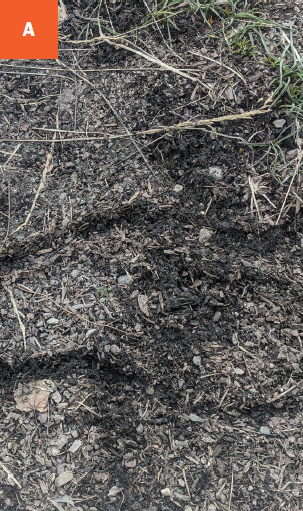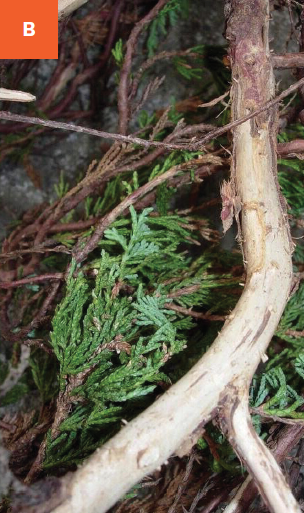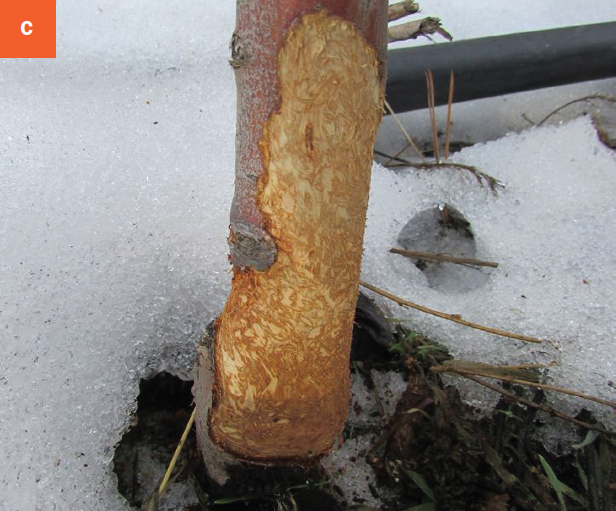Voles
DAMAGE/SYMPTOMS Tiny marks from vole incisors can be seen on the bark of trees and shrubs. Bark damage is usually on the lower eight to ten inches of the trunk where it is protected by snow.
OCCURRENCE Vole damage to trees and shrubs primarily takes place in the fall and winter. During winter months and sometimes during drought, voles will move from surrounding uncultivated areas into landscaped yards and gardens to find food.
SUSCEPTIBILITY/TOLERANCE Voles primarily eat grasses but will eat a wide assortment of vegetation including bark during the winter months.
MANAGEMENT Habitat modification, such as removing ground covers, eliminating debris, and lawn mowing, are strategies to reduce vole numbers. Exclusion is another approach for limiting vole damage. Install hardware cloth at least six inches below the ground and extending at least 14 inches above ground. Protect seedlings or young trees with trunk guards or poly wrap. Repellents like capsaicin, the compound of chili peppers that makes them hot, are registered for voles in Montana. They can be sprayed on non-crop/feed plants, such as ornamental trees, shrubs, fruit bushes, and vines. Trapping is a tool for controlling voles in areas with a few acres or less. Unbaited mouse snap traps can be placed perpendicular to their paths with the trigger in their trail. Baited snap traps are also effective but should be protected by an overhead cover to prevent injury to non-target animals.
A Vole paths become more apparent as snow melts in the spring. B Bark removed from juniper due to vole feeding. C Vole damage to the base of a tree.



